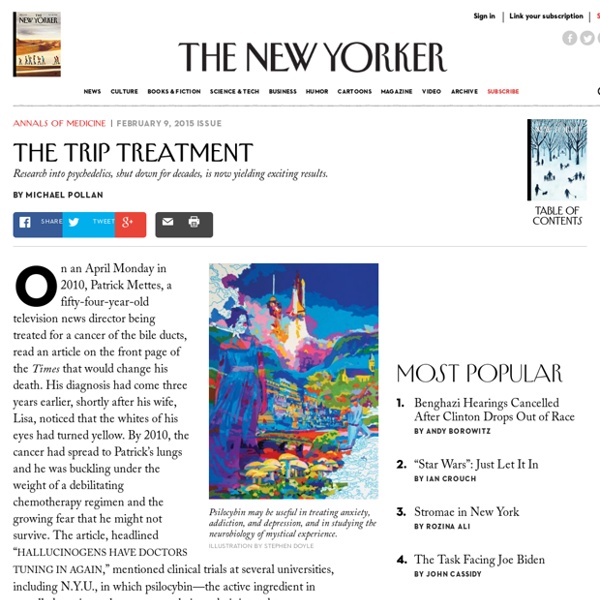The Trip Treatment

Waking Up: Everything the Media Told You About Psychedelics is Wrong
“What if most of what you’ve been told in the media about psychedelics is wrong?” This is former CNN investigative journalist and wartime correspondent Amber Lyon, whose new effort Reset.me, is an equally ambitious, compassionate, and risky move into an outright confrontation with The War on Drugs. “The law is not based on science,” says Lyon – who’s used to dodging bullets, and whose gig with CNN ended when she blew the whistle on their censorship of her Arab Spring repression documentary. For someone so accustomed to endangering her life and reputation for the truth, it’s just another day at work to stand against the tyranny that lies about the well-researched and beneficial properties of oligarchy-threatening illicit natural medicines. Here’s a quick rundown of the facts about the substances our government has taught us we should fear: Psychedelics are not neurotoxic or addictive. The list goes on. Read on and watch for more. Make Globalish part of your seeker's path. Credits
i heart intelligence New research proves psilocybin’s efficiency in treating alcoholism
Alcoholism is one of the most dangerous and common addictions of our time. The World Health Organization’s statistics show that over 140 million people worldwide are suffering from it. Alcoholism-related illnesses are the cause of death of more than 80,000 people a year in the US and of over 3 million people in the world. With so many people having to deal with the problems of such kind of addiction, different studies have been held in order a reliable treatment to be found. The study aimed to provide a foundation for more researches on the subject and to prove that this drug is reliable for treating alcohol addiction. The researchers’ team write that psilocybin’s effects have previously been explored in various studies, but there had not been done any on its effects on alcohol addicted people. Curing alcohol addiction requires really hard work and strong will and the path to sobriety is an extremely difficult one. Previous research on psilocybin and addictions
Psychedelic Mushrooms Are Being Studied to Help Ease Depression and Anxiety
The psychedelic effects of magic mushrooms may help relieve depression, anxiety, and "existential distress" in ways unlike any traditional anti-depressants or anti-anxiety medications, according to new research. The drug is being studied in limited trials in the US and abroad, where scientists are trying to understand through brain imaging tests on cancer patients and those with mental disorders like obsessive-compulsive disorder how the active chemical in mushrooms — psilocybin — actually affects the brain when it is taken. Scientists at King's College, London, released research in late October in which they studied the brain images of 15 healthy volunteers who took psilocybin. They found that their brains showed significantly increased connectivity, in which regions of the brain that typically do not communicate with one another do communicate under the influence of mushrooms. Ketamine May Help Treat Bipolar Disorder. Read more here.
Reset.Me | Facebook
Related:
Related:



